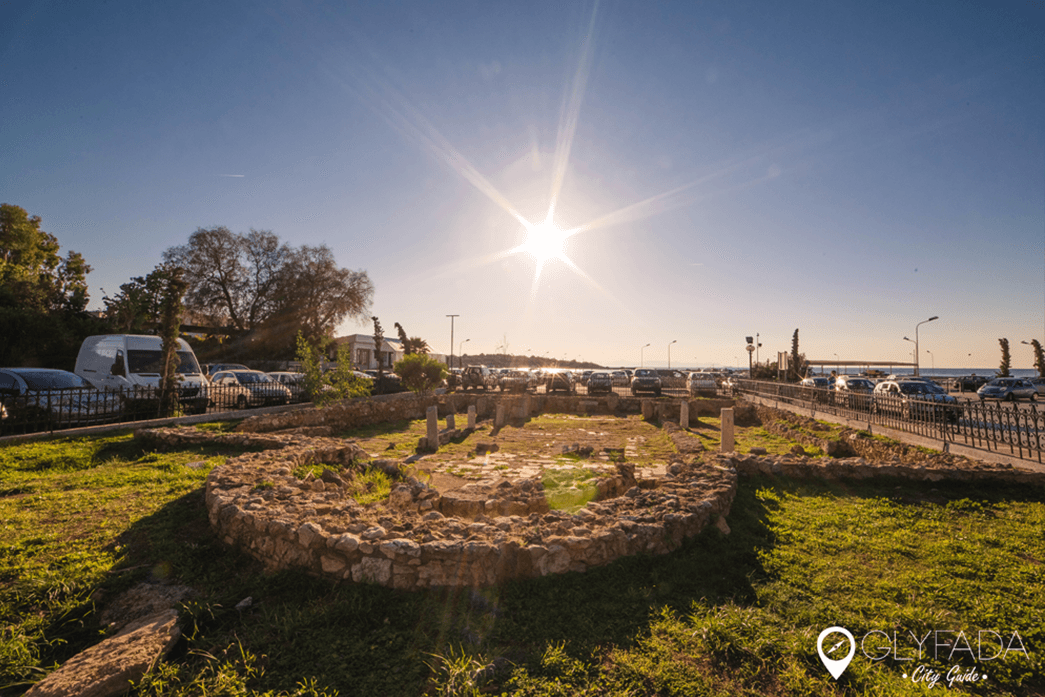
The remains of an early Glyfada's Christian Basilic era, were accidentally discovered in 1927 during an excavation of graves from N.Kyparissis and researched by Anastasios Orlando. They are maintained visible inside the fenced archaeological site located near the center "Asteria" between the coastal road (Vas. Georgiou B ') and the coast of a small bay which was the port of Aixoni, They have been revealed other interesting relics near the beach of the late Roman and Byzantine period, showing that in this region there was still an important settlement during the Christian era.
Address: Diadochou Pavlou 52-54, Postal code 166 75, Glyfada. The Christianic Royal era was from the late 5th century. A.D. It is a three-aisle church, with a semicircular apse narthex.The shape of it, is almost square (the outer dimensions are 17,50 x 15,75 m.) It is rare for Greece and also resembles eastern models, like the Basilic's from northern Syria in the second half of the 5th century. A.D.
The narthex had an outer door at the west side of the building and had access to the main temple from a central opening, with two columns between pilasters, and two smaller side entrances (one to the north and one to the south aisle). the floor was paved with marble slabs. In a later building phase they constructed two parallel walls, left and right of the central entry, that stepped onto the narthex floor and limited the space from the width of the nave. The main temple was divided into three aisles by two colonnades that had 5 unbarred columns each, alternately white and blue marble, so that color contrast is created. There was only found one intact column (Height 2,65 m.) and fragments of some other ones. Their bases that are saved until today, are all ionic made from white marble. The capitals were also Ionic from white Cycladic marble, and have an unique suffix, like an inverted pyramid-shape with rounded surfaces without having any decoration. The colonnade did not have a second floor and the spaces between the pillars were connected with arches. The roof must have been made of wood, because the exterior walls were not strong enough to support the vaulted roof.
The basilica was destroyed in the 6th or 7th century. A.D. and rebuilt in Byzantine times (perhaps the 11th century AD.) as an aisled shape church with much smaller dimensions. The outer walls of the Byzantine church were build in the place where it used to have the two colonnades, incorporating in their masonry remains of pillars. At the same time was limited and the narthex with the construction of two walls that had stepped on the floor.
After the destruction of the Byzantine temple was built in the Ottoman times, a small single-aisled church, which was limited in the space between the arch and the chancel of the basilica temple. The ruins of it were demolished to do the research of the basilica, so it is not maintained, today only a small piece of column which is made from blue marble, it was at the center of the arch and served as a support of altar.





